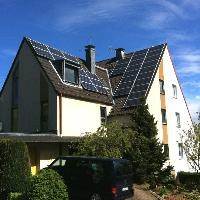(BRUSSELS) – The European Parliament and EU Council reached a provisional political agreement Thursday on a proposal to revise the energy performance of buildings directive.
The revised directive sets new and more ambitious energy performance requirements for new and renovated buildings in the EU and encourages member states to renovate their building stock.
“Buildings are responsible for over one third of greenhouse gas emissions in the EU,” said Spain’s minister for the ecological transition Teresa Ribera, for the EU presidency: “Thanks to this agreement, we will be able to boost buildings’ energy performance, cut emissions and tackle energy poverty.”
The main objectives of the revision are that by 2030 all new buildings should be zero-emission buildings, and that by 2050 existing building stock should be transformed into zero-emission buildings.
The co-legislators have agreed on article 9a on solar energy in buildings which will ensure the deployment of suitable solar energy installations in new buildings, public buildings and existing non-residential ones which undergo a renovation action that requires a permit.
When it comes to minimum energy performance standards (MEPS) in non-residential buildings, the co-legislators agreed that in 2030 all non-residential buildings will be above the 16% worst performing and by 2033 above 26%.
Concerning the renovation target for residential buildings, member states will ensure that the residential building stock will reduce the average energy consumption by 16% in 2030 and a range between 20-22% in 2035. 55% of the energy reduction will have to be achieved through renovation of the worst performing buildings.
Finally, in relation to the plan to phase out fossil fuels boilers, both institutions agreed on including in the National Building Renovation Plans a roadmap with a view to phase out of fossil fuel boilers by 2040.
The provisional agreement reached now needs to be endorsed and formally adopted by both institutions.
General approach on the Energy Performance of Buildings Directive


